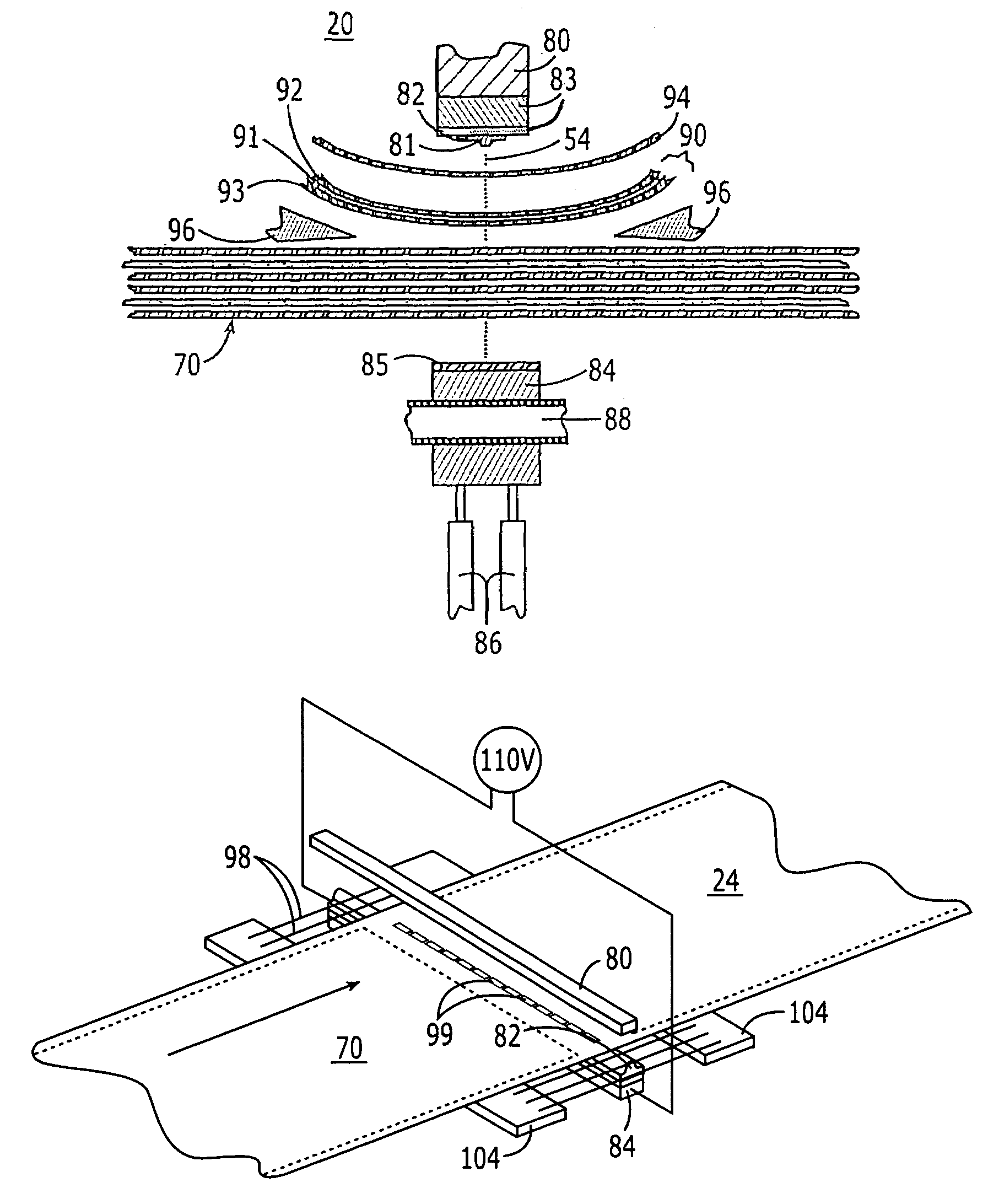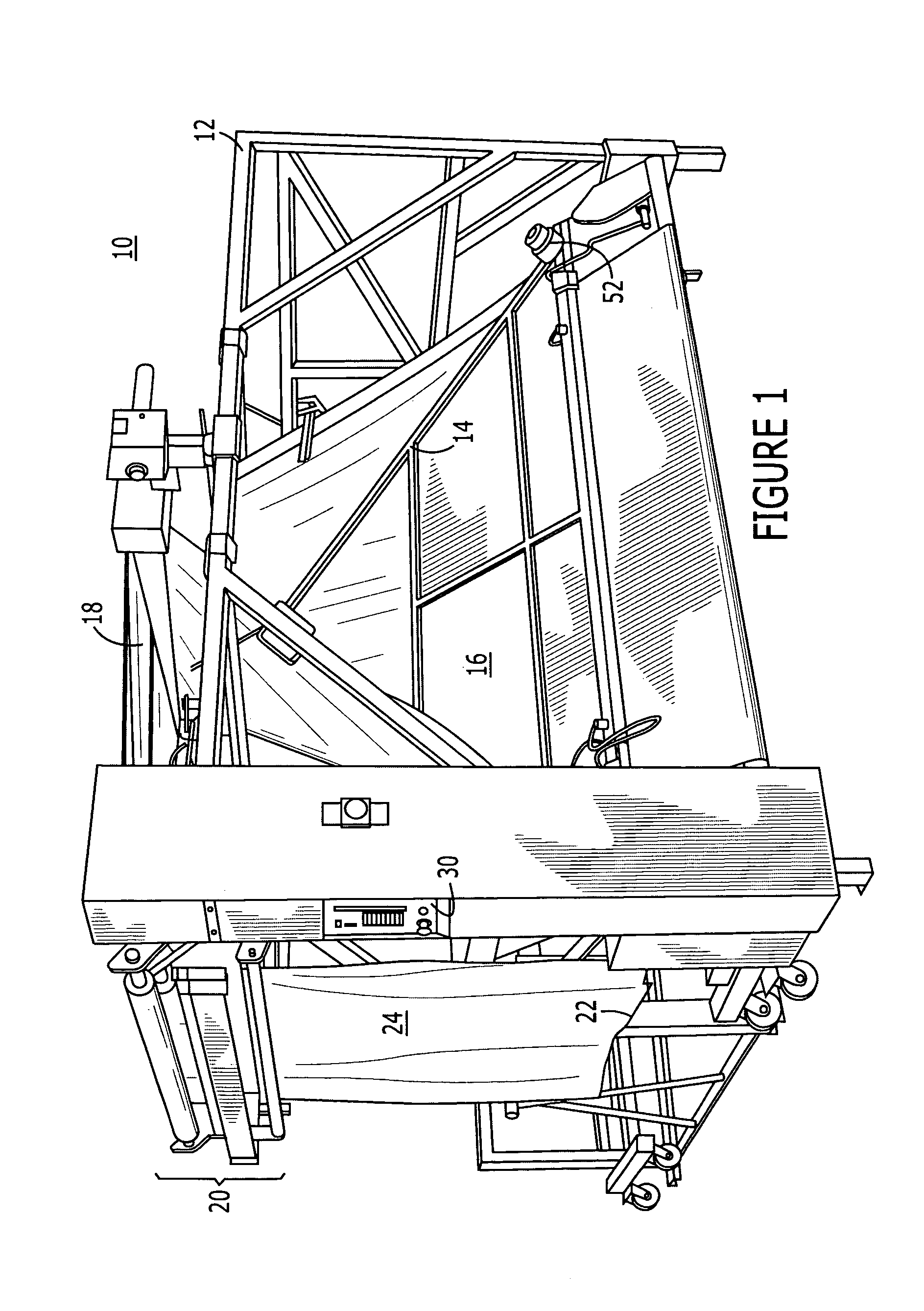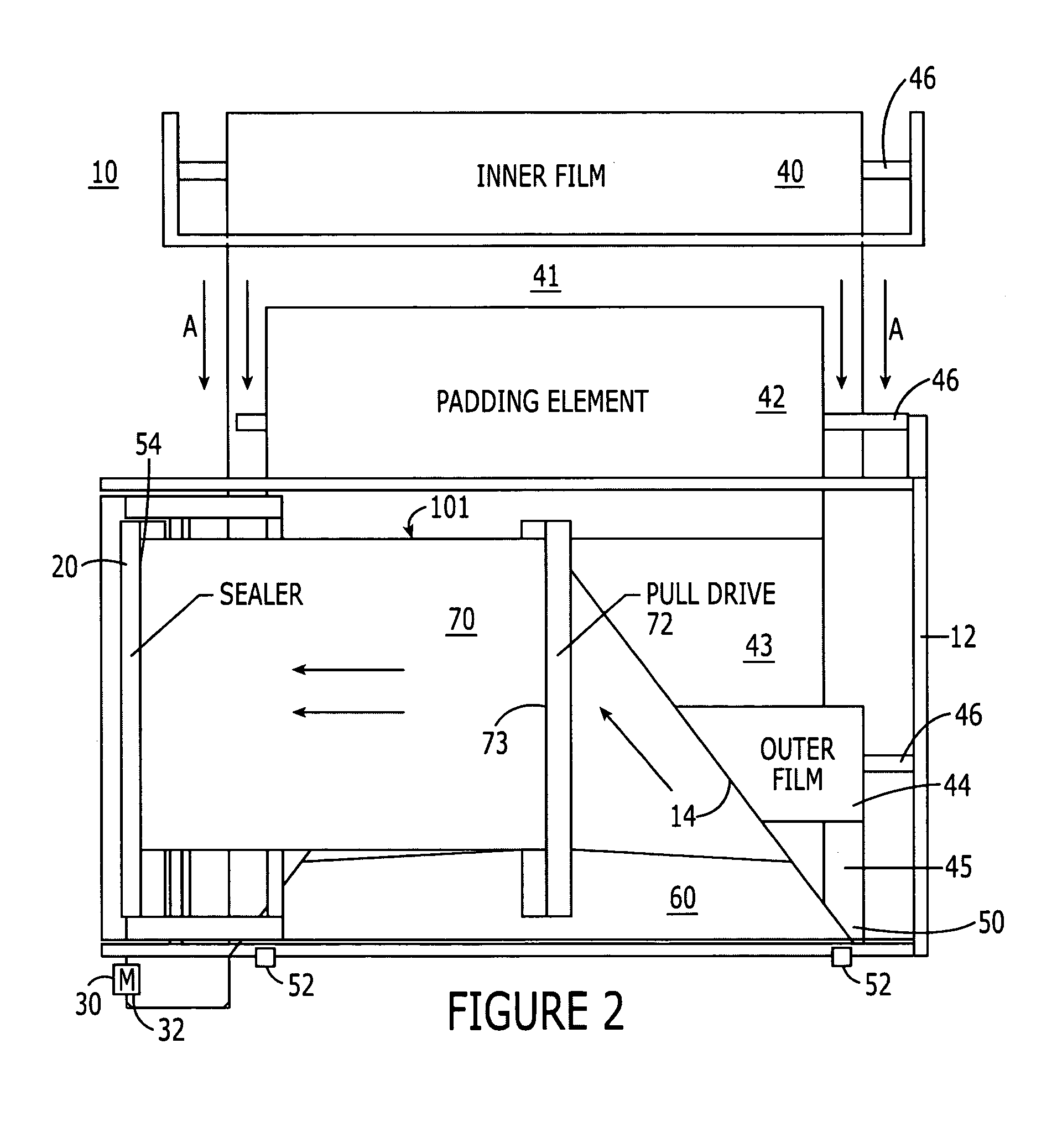Queue-based bag forming system and method
a technology of forming system and padded bag, which is applied in the field of system and method of forming padded bags, can solve the problems of special difficulties in the manufacturing process, loss of the manufacturer, irritation and delay on the part of the customer, etc., and achieves the effects of facilitating capture and heat transfer, preventing short circuit development, and increasing clamping pressur
- Summary
- Abstract
- Description
- Claims
- Application Information
AI Technical Summary
Benefits of technology
Problems solved by technology
Method used
Image
Examples
Embodiment Construction
[0033]The present invention includes a method and a system for forming a series of bags having varying desired characteristics and dimensions for containing a like number of bulky articles each requiring one of the bags of varied characteristics and dimensions. Generally, the bags are to be constructed in three layers: two layers of thermoplastic film and a layer of a padding element. The film may be made of any suitable thermoplastic of any desired thickness, and the padding element may be a thermoplastic foam, a polyester pad, a synthetic fabric, or any other suitable material capable of being heat-sealed into a captured relationship with the thermoplastic film. By way of example, the present invention has been shown to be useful with a polyethylene film of 1 mil to 5 mil thickness and either a polyethylene foam of 3 / 32″ thickness or a polyester pad of 3.5-oz. weight (thickness of approximately 0.020″). However, those skilled in the art will recognize that a wide variety of materi...
PUM
| Property | Measurement | Unit |
|---|---|---|
| thickness | aaaaa | aaaaa |
| initial temperature | aaaaa | aaaaa |
| softening point | aaaaa | aaaaa |
Abstract
Description
Claims
Application Information
 Login to View More
Login to View More - R&D
- Intellectual Property
- Life Sciences
- Materials
- Tech Scout
- Unparalleled Data Quality
- Higher Quality Content
- 60% Fewer Hallucinations
Browse by: Latest US Patents, China's latest patents, Technical Efficacy Thesaurus, Application Domain, Technology Topic, Popular Technical Reports.
© 2025 PatSnap. All rights reserved.Legal|Privacy policy|Modern Slavery Act Transparency Statement|Sitemap|About US| Contact US: help@patsnap.com



